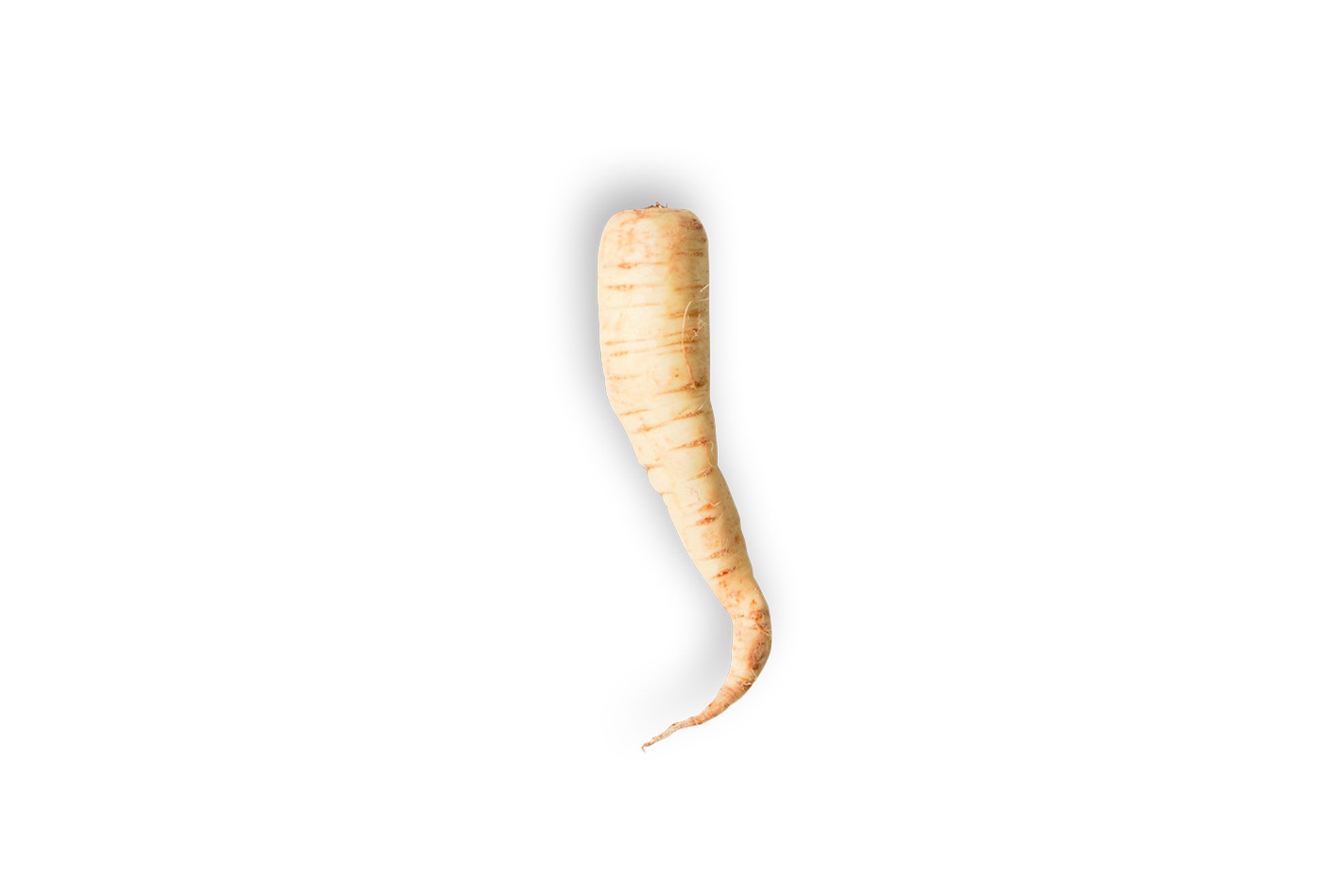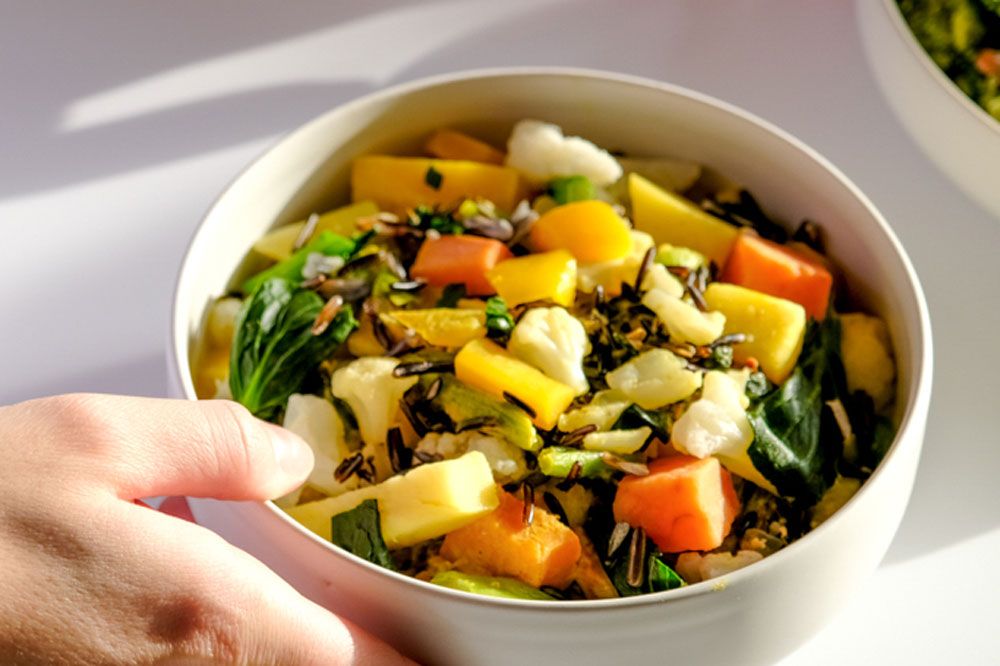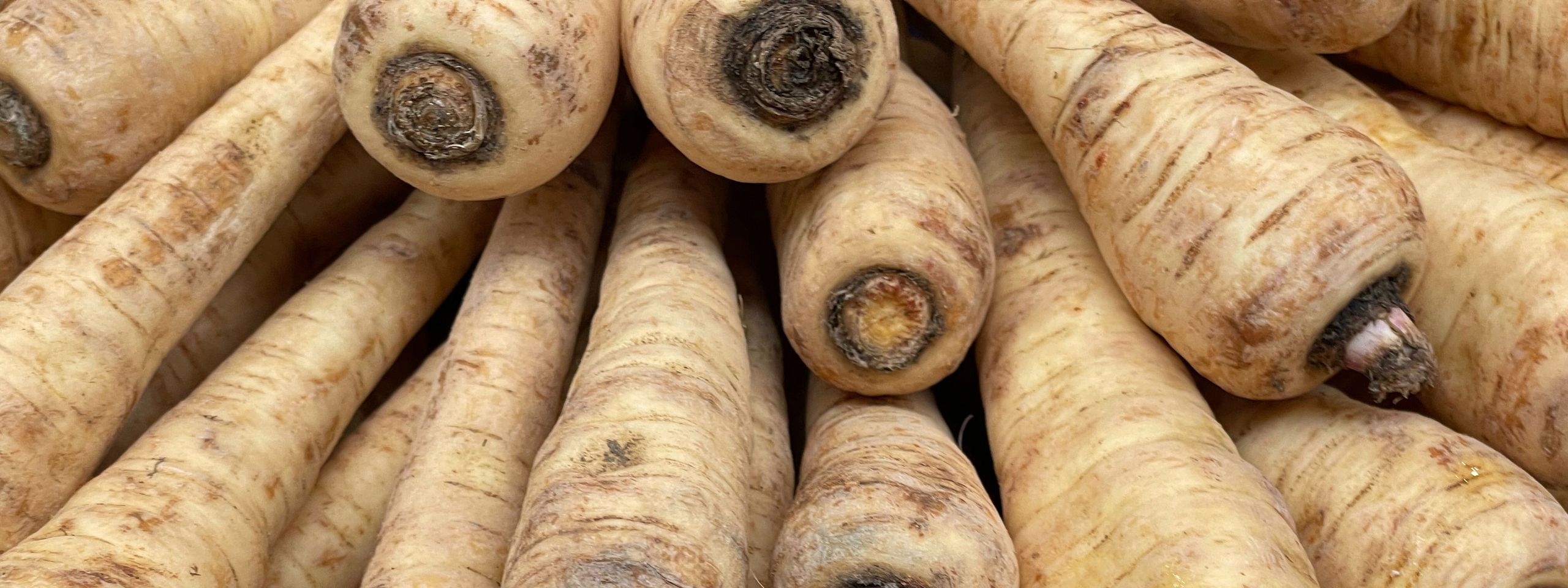Parsnip
Sweet comeback
Intro
This root vegetable, also known as the German root, has a sweet-nutty flavour and is at home in Germany. A vegetable that was forgotten for a period of time, but recently made a comeback and is now popular in many kitchens. The flavour lies somewhere between carrots and celery, and gives any dish a sweet-nutty aroma. Why is the parsnip worthy of its new spotlight? And how to cook it best? Find out below.

What are parsnips?
Parsnips are the result of a crossing between potatoes and parsley. Along with celery and carrots, it belongs to the family of Umbelliferous plants (Apiacaea). Parsnips grow in Asia and Europe, and after the Romans brought them to central Europe, it became a nutritional staple. This is also due to the fact that parsnips can grow throughout the year, are resistant to the cold and generally a low-maintenance vegetable.
Around the 18th century, potatoes replaced parsnips as the go-to vegetable, due to its even shorter harvest period.
Parsnips are ready to be harvested when their size has reached 20-30cm. Other ripe-characteristics are the creamy colour and a meat-like consistency. Parsnips are similar to root parsley.
They contain inulin (a probiotic) and promote a healthy digestion and are great for gut health. This makes parsnips a great vegetable for diabetics. The low nitrate value makes them a suitable vegetable for children and people suffering from allergies.

Where do parsnips come from?
Parsnips originate from the Mediterranean region as well as Asia. They were cultivated in these parts 3000 years ago.
Which varieties are there?
Aromata
-Colour:Buttery-yellow
-Flavour: nutty, sweet
Dicke Dern
-Colour: creamy white
-Flavour: intense and juicy
White Halblange
-Colour: creamy white
-Flavour: intense-sweet
Hollow Crown
-Colour: white-orange
-Flavour: sweet-nutty
Turga
-Colour: yellow-white
-Flavour: sweet
White Gem
-Colour: White
-Flavour: sweet
White King
-Colour: white
-Flavour: strong, aromatic
When are parsnips in season?
Mid-September and throughout the winter
Pre-frost: taste similar to celery
During frost: more aromatic and sweeter
Our tips for how to prepare parsnips:
Parsnips have a wide range of great preparation methods. Like carrots, they can be peeled or eaten with the peel.
Use parsnips in:
In purees, stews, gratins, with pasta, salads, soups, sauces and as a spice
Parsnip nutrition facts per 100g:
| Typical Values | 100g |
|---|---|
| Calories | 75 |
| Fat | 0.3g |
| Carbohydrates | 18g |
| Fibre | 4.9g |
| Sugar | 4.8g |
| Protein | 1.2g |
Nutrients found in parsnips:
Essential oils and Pectin
Vitamins:
Vitamin A, Vitamin B1, B2, B3, B5, B6, B7, B9, Vitamin C, Vitamin E, Vitamin K, Folic Acid and Niacin
Minerals:
Chloride, Iron, Potassium, Calcium, Copper, Magnesium, Manganese, Sodium, Phosphorus, Sulphur and Zinc
Secondary plant substances:
Coumarin and Furocoumarine
(careful! Can cause skin rashes)

